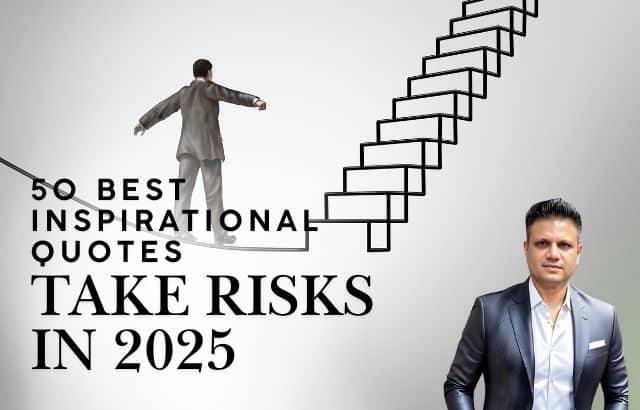The path to personal growth, success, and fulfillment is rarely found within the safe boundaries of your comfort zone. In fact, some of the most rewarding experiences in life arise when we choose to face our fears and take risks. Yet, stepping outside of what feels familiar can often be intimidating. Fear of failure, rejection, or the unknown can hold us back from reaching our true potential.
But here’s the truth: Great things never come from staying in your comfort zone. To achieve the extraordinary, you must learn how to overcome fear, embrace discomfort, and take risks that push you toward your goals. In this post, we’ll explore how you can break free from your comfort zone and transform your life by taking calculated risks—ultimately leading to the success and growth you’ve always desired.
Table of Contents
Identify the root of your fear.

Before you can overcome your fear and take risks outside your comfort zone, it’s important to identify the root of your fear. Is it a fear of failure? A fear of the unknown? A fear of rejection? Once you understand the underlying cause of your fear, you can begin to address it and develop strategies to overcome it. This may involve seeking support from friends or a therapist, practicing mindfulness and relaxation techniques, or gradually exposing yourself to the thing you fear in a safe and controlled way. Remember, facing your fears is a process, and it’s okay to take small steps towards your goals.
Start small and build up gradually.

Taking risks outside your comfort zone can be daunting, but starting small and building up gradually can help you overcome your fear. For example, if you’re afraid of public speaking, start by speaking in front of a small group of friends or family members. As you become more comfortable, gradually increase the size of your audience. This approach can be applied to any fear or challenge you’re facing. By taking small steps and gradually increasing the difficulty, you’ll build confidence and develop the skills you need to succeed. Remember, it’s okay to take your time and go at your own pace.
Practice mindfulness and visualization techniques.

Mindfulness and visualization techniques can be powerful tools for overcoming fear and taking risks outside your comfort zone. Mindfulness involves being present in the moment and fully aware of your thoughts and feelings. This can help you identify and manage any negative thoughts or emotions that may be holding you back. Visualization involves imagining yourself successfully completing a task or achieving a goal. This can help you build confidence and reduce anxiety. Try incorporating these techniques into your daily routine to help you overcome your fears and take on new challenges.
Surround yourself with supportive people.

One of the best ways to overcome fear and take risks outside your comfort zone is to surround yourself with supportive people. Seek out friends, family members, or colleagues who believe in you and your abilities. These individuals can provide encouragement, advice, and a listening ear when you need it most. Additionally, consider joining a group or community of like-minded individuals who share your interests or goals. This can provide a sense of belonging and support as you navigate new challenges and experiences.
Celebrate your successes, no matter how small.

Overcoming fear and taking risks outside your comfort zone can be a daunting task, but it’s important to celebrate your successes along the way. Even small victories can be a big deal when you’re stepping outside your comfort zone. Take time to acknowledge your progress and give yourself credit for the hard work you’ve put in. This can help boost your confidence and motivate you to continue taking risks and pursuing your goals.
Frequently Asked Questions (FAQs)

1. How can I overcome the fear of taking risks?
Answer: The first step is acknowledging your fear and understanding its source. Once you recognize what’s holding you back, break down the risk into manageable steps. Start by taking small risks and gradually build your confidence.
Example: If you’re scared of quitting your stable job to start a business, you could begin by testing your idea part-time before making the leap full-time. This way, you minimize the risk and build up confidence over time.
2. What are the benefits of stepping outside my comfort zone?
Answer: Stepping outside your comfort zone helps you grow, learn new skills, and face challenges that ultimately lead to personal and professional growth. It opens doors to new opportunities and experiences that can transform your life.
Example: A shy person who forces themselves to speak in public might initially feel uncomfortable, but over time, this risk helps them become more confident and skilled at communication, which could lead to career advancements.
3. How do I know if a risk is worth taking?
Answer: Evaluate the potential rewards and the consequences of the risk. Consider the worst-case scenario and ask yourself if you can handle it. If the potential benefits outweigh the risks, it might be worth pursuing.
Example: If you’re thinking about investing in a startup, weigh the potential for high returns against the risk of losing your money. If you can afford to take the risk and the startup has a solid plan, it could be a smart move.
4. Can taking risks really lead to success?
Answer: Yes! Most successful people took risks that pushed them beyond their comfort zones. Risk often leads to new experiences, innovation, and opportunities that wouldn’t have been available otherwise.
Example: Many tech entrepreneurs, like Elon Musk and Steve Jobs, took huge risks in their careers. They faced uncertainty but ended up revolutionizing entire industries because they were willing to take those risks.
5. What if I fail after taking a risk?
Answer: Failure is a natural part of taking risks and learning. Instead of fearing failure, view it as a stepping stone toward success. Every failure offers valuable lessons that bring you closer to your goals.
Example: Thomas Edison famously failed thousands of times before inventing the light bulb. He didn’t see those failures as setbacks but as experiments that helped him understand what worked and what didn’t.
6. How do I manage the anxiety that comes with taking risks?
Answer: Practice mindfulness techniques, such as meditation or deep breathing, to calm your mind. Focus on the positive outcomes and remind yourself that discomfort is a part of growth. Breaking the risk into smaller, manageable actions can also reduce anxiety.
Example: Before speaking at a big event, an entrepreneur might practice visualization techniques, imagining themselves succeeding and feeling confident. This reduces anxiety and prepares them mentally for the challenge.
Hirav Shah’s Best Quotes to Inspire Personal Growth

1. “Fear of rejection is the barrier between where you are and where you want to be.”
Explanations
Fear of rejection often holds us back from taking necessary risks. It prevents us from putting ourselves out there and pursuing our dreams, no matter how close we are to success.
Strategy
Recognize that rejection is a part of growth. Shift your perspective to view rejection as feedback, not failure.
Execution
Take small risks every day, whether it’s speaking up in a meeting, sending a pitch email, or applying for a job you think you’re underqualified for. Over time, you’ll build resilience and confidence.
Example
A job seeker who fears rejection applies to 10 jobs a week, despite initial failures. Each rejection becomes a learning experience, and eventually, they land the perfect role.
2. “Great things never come from staying in your comfort zone.”
Explanations
Comfort zones are safe, but they also keep us stagnant. True growth and achievement require stepping into the unknown, where the potential for success is highest.
Strategy
Start by taking one small step outside your comfort zone daily. Whether it’s trying something new or challenging a fear, every little action adds up.
Execution
Sign up for a class that challenges you, introduce yourself to a stranger, or start a project outside your typical scope. These are the actions that lead to big changes.
Example
A person afraid of public speaking begins with small presentations in front of friends. Eventually, they are able to speak at a major conference with confidence.
3. “The only limits that exist are the ones you place on yourself.”
Explanations
Often, we create mental barriers that prevent us from achieving our goals. The only real limitations are those we believe exist.
Strategy
Identify your limiting beliefs and challenge them. Ask yourself, “What’s the worst that could happen?” This can help you reframe your perspective.
Execution
Set an audacious goal, then break it down into achievable steps. Push past your self-imposed limits by constantly expanding your comfort zone.
Example
A runner who believes they can’t break a 5-minute mile starts by improving their form, increasing their stamina, and, over time, surpasses their perceived limitations.
4. “Success is not the absence of fear, but the ability to take action in spite of it.”
Explanations
Fear is natural, but it shouldn’t stop us from taking action. Successful people don’t eliminate fear—they move forward regardless of it.
Strategy
Understand that fear is a normal reaction to stepping into unknown territory. Instead of avoiding it, take deliberate steps to move forward despite it.
Execution
When faced with a fearful situation, break it down into smaller, manageable actions. Focus on the process, not the overwhelming feeling of fear.
Example
An entrepreneur launches their business despite being scared of failure. They focus on small wins—getting their first customer, refining their product—and success follows.
5. “The best way to predict the future is to create it.”
Explanations
Waiting for opportunities to come your way often leads to missed chances. To shape your future, you need to take proactive steps toward your goals.
Strategy
Plan for the future you want, and then take daily actions that align with that vision. Small, consistent steps lead to major breakthroughs.
Execution
Start by defining your vision for the future and setting clear, actionable goals. Break down the steps necessary to achieve those goals and begin working on them immediately.
Example
An aspiring author begins writing one chapter a day, even if it’s only for 15 minutes. After months of consistent effort, they finish their first novel.
Conclusion

Stepping outside your comfort zone and taking risks is a necessary part of personal and professional growth. While fear and uncertainty are natural reactions to the unknown, they don’t have to define your journey. Embracing discomfort, challenging your limits, and pushing forward despite fear can lead to extraordinary rewards and new opportunities.
Remember, growth happens when we take calculated risks, challenge our self-imposed limits, and consistently act in spite of our fears. By adopting the strategies outlined in this post and applying them to your own life, you can unlock your full potential and start creating the future you’ve always imagined.
Great things never come from staying in your comfort zone—take the first step today, and you’ll soon find that the risks you once feared will lead to the success and fulfillment you deserve.










